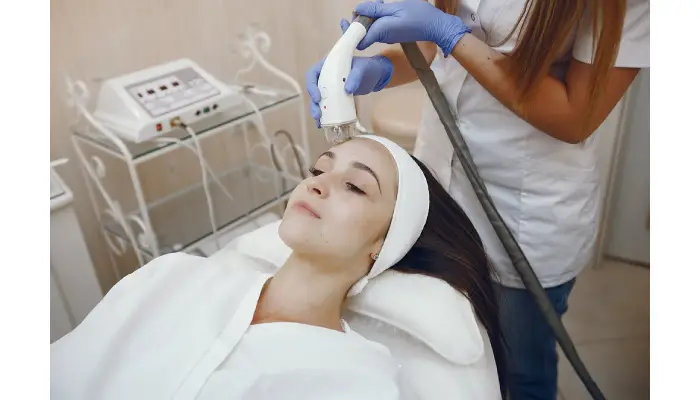
The Cost of Hyperpigment Laser Treatment: Is It Worth It?
Hyperpigmentation can be a frustrating skin issue, with those dark patches often linked to sun exposure or hormonal shifts. When considering laser treatments for this condition, understanding the options is key. Ablative lasers, like CO2 and Erbium, work on the outer skin layer while non-ablative options, such as Nd:YAG lasers, offer deeper solutions without major surface damage. The costs vary widely; an average session may run from $200 to $1,200 and multiple visits might be necessary for effective results. While many find success with these treatments, it’s vital to weigh potential side effects and ongoing expenses against your desired outcomes before committing.
1. Understanding Hyperpigmentation
Hyperpigmentation is a skin condition that can affect individuals of all ages, manifesting as dark patches or spots. This occurs when there is an overproduction of melanin, the pigment responsible for skin color. Various factors contribute to this condition, including sun exposure, which can trigger melanin production as a defense mechanism against UV rays. Hormonal fluctuations, particularly during pregnancy or due to certain medications, can also lead to the development of dark patches. Skin injuries, like cuts or acne scars, may leave behind traces of hyperpigmentation as the skin heals. Understanding these causes is crucial for determining the best treatment options and prevention strategies.
2. Types of Laser Treatments
Laser treatments for hyperpigmentation primarily fall into two categories: ablative and non-ablative lasers. Ablative lasers, such as CO2 and Erbium lasers, work by targeting the outer layers of skin. This process not only removes the damaged skin but also stimulates the growth of new, healthier skin. While this approach can yield significant results, it typically involves a longer recovery period, often requiring a week or more for the skin to heal completely.
On the other hand, non-ablative lasers like Nd:YAG and Pulsed Dye lasers penetrate deeper into the skin without causing surface damage. These lasers are less invasive and usually result in minimal downtime, with patients often experiencing just a few days of slight redness. Non-ablative treatments may require multiple sessions to achieve desired outcomes, but they are generally considered a safer option for those looking to avoid the extended recovery associated with ablative treatments. Each type has its own set of benefits, risks, and suitability depending on the individual’s skin type and the severity of hyperpigmentation.
3. Cost Factors for Laser Treatments
The cost of laser treatments for hyperpigmentation varies based on several important factors. First, geographical location plays a significant role; urban areas typically have higher prices compared to rural regions due to higher overhead costs for clinics. Second, the experience and reputation of the provider can influence the cost. A highly regarded dermatologist with extensive experience may charge more than a less experienced practitioner.
Additionally, the type of laser treatment selected impacts pricing. Ablative lasers, which target the skin’s outer layers, tend to be more expensive due to their complexity and the longer recovery time they necessitate. In contrast, non-ablative lasers, which are less invasive, often come at a lower price point. The average cost for sessions can range from $200 to $1,200, and most patients will require multiple sessions to achieve the desired results. This cumulative cost is an essential factor to consider when evaluating laser treatments.
- Geographic location of the treatment facility
- Type of laser technology used
- Number of sessions required for optimal results
- Experience and qualifications of the practitioner
- Facility overhead and operational costs
- Patient-specific factors, such as skin type and severity of hyperpigmentation
- Additional costs for pre-treatment consultations and post-treatment care
4. Average Cost Range
The cost of hyperpigmentation laser treatment can vary widely, typically ranging from $200 to $1,200 per session. Factors influencing this price include the geographic location of the clinic, the experience of the provider, and the specific type of laser used. For instance, clinics in urban areas may charge more than those in rural regions. Additionally, ablative lasers, which are more intensive, tend to be on the higher end of the scale compared to non-ablative options. Most patients will require multiple sessions—usually between three to five—to achieve the best results, which can increase the overall cost significantly. It’s important to budget for these expenses, as they can add up quickly.
5. Effectiveness of Treatments
Laser treatments for hyperpigmentation have shown promising results, with many patients experiencing noticeable improvements in their skin tone. Research indicates that ablative lasers can lead to significant reduction in dark spots, as they remove the outer skin layers and encourage new, healthy skin to emerge. For example, patients with sun-induced pigmentation often report clearer skin after just a few sessions.
Non-ablative lasers, while gentler on the skin, also demonstrate effectiveness by penetrating deeper layers without damaging the surface. These treatments tend to be less aggressive, making them suitable for individuals with sensitive skin or those looking to minimize downtime. However, results can vary based on individual skin types and the severity of the hyperpigmentation.
Most patients will need multiple sessions—typically between three to five—to achieve optimal results. It’s essential to have realistic expectations. Some may see improvement after the first session, while others might require additional treatments to fully address their concerns. Ultimately, the effectiveness of laser treatments hinges on consistent follow-up care and adherence to post-treatment guidelines.
6. Recovery Time and Side Effects
Recovery time after hyperpigmentation laser treatment varies significantly based on the type of procedure. For ablative lasers, such as CO2 or Erbium, patients can expect a longer recovery period, typically ranging from one to two weeks. During this time, the skin may appear red and swollen, similar to a severe sunburn. It’s essential to avoid sun exposure and follow post-treatment care instructions to aid healing. On the other hand, non-ablative lasers, like Nd:YAG and Pulsed Dye lasers, generally require minimal downtime, with only a few days of slight redness or swelling.
Patients should also be aware of potential side effects. Common reactions include temporary redness, swelling, and a sensation similar to mild sunburn. In some cases, there may be changes in skin pigmentation, either lightening or darkening, which can be particularly concerning for individuals with darker skin tones. Although these side effects are usually temporary, they can influence a person’s decision about whether to pursue treatment. Understanding the recovery process and potential side effects is crucial for setting realistic expectations and ensuring satisfaction with the results.
7. Pros and Cons of Laser Treatment
Laser treatment for hyperpigmentation comes with its own set of advantages and drawbacks. On the positive side, these treatments can significantly reduce the appearance of dark spots, leading to a more even skin tone. Non-invasive options are available, which means less downtime and quicker recovery for those who want to resume their daily activities swiftly. However, the costs can accumulate, particularly since multiple sessions are often needed to achieve the desired results. Moreover, while many patients see improvements, results are not always permanent; maintenance sessions might be necessary to keep the skin looking its best.
Additionally, potential side effects, such as temporary redness or swelling, can be concerning for some individuals. In rare cases, there may be changes in skin color that require further treatment. Weighing these pros and cons carefully is essential for anyone considering this option.
8. Alternative Treatment Options
If laser treatments aren’t the right fit for you, several alternative options exist to tackle hyperpigmentation. Topical treatments are a popular choice; products containing ingredients like hydroquinone, retinoids, or vitamin C can gradually lighten dark spots over time. These can be less costly upfront compared to laser sessions, but they require consistent use and patience for visible results.
Chemical peels are another alternative, utilizing acids to exfoliate the skin and improve tone. Depending on the strength of the peel, recovery time can vary, but many experience noticeable improvements after just one session. Microdermabrasion, which involves gently abrading the skin’s surface, is also effective for superficial pigmentation and is typically less expensive than laser treatments.
While these alternatives may take longer to show significant effects, they can be suitable options for those looking for less invasive and more budget-friendly methods to manage hyperpigmentation.
9. Importance of Consultation
Consultation is a crucial step before undergoing any laser treatment for hyperpigmentation. Meeting with a dermatologist allows you to discuss your specific skin type, concerns, and the severity of your hyperpigmentation. During this consultation, the dermatologist can recommend the most suitable type of laser treatment based on your individual needs. For instance, someone with darker skin may require a different approach than someone with lighter skin to avoid complications. Additionally, the consultation provides an opportunity to understand the potential results and realistic expectations. This is also the time to ask about costs, as they can vary significantly depending on the treatment plan. Knowing what to expect helps prepare you emotionally and financially, ensuring you make an informed decision.
10. Insurance Coverage for Treatments
Insurance coverage for hyperpigmentation laser treatments can be tricky. Generally, most insurance plans classify these procedures as cosmetic, which means they are not covered. This is because hyperpigmentation is often considered a cosmetic concern rather than a medical necessity. For example, if someone has dark spots caused by sun exposure, the insurance may not see this as a reason to foot the bill. Patients should always check with their insurance provider to confirm specifics about their policy. In some cases, if hyperpigmentation is linked to a medical condition, there might be a chance for partial coverage. However, this is rare and typically requires thorough documentation from a healthcare professional. Therefore, it’s crucial to budget for these treatments out of pocket and understand that the financial responsibility falls on the patient.
11. Final Considerations Before Treatment
Before committing to laser treatment for hyperpigmentation, it’s important to consider several personal factors. First, reflect on your skin type and any specific concerns you may have. Different skin tones can react differently to laser treatments, and what works for one person might not be suitable for another. Additionally, think about your long-term skin goals. Are you looking for a quick fix, or are you willing to invest time and money for lasting results?
Budget is another crucial aspect. If the cost of multiple sessions strains your finances, you may want to explore alternative treatments that can fit better within your budget. Moreover, consider your lifestyle and how much downtime you can afford. If you have a busy schedule, the recovery time associated with certain laser treatments might be a significant factor.
Lastly, take your time to research clinics and professionals. A reputable provider can make a significant difference in the treatment’s outcome and your overall experience. Don’t rush the decision; gather information, ask questions, and make sure you feel comfortable with your choice.
Frequently Asked Questions
1. What causes hyperpigmentation?
Hyperpigmentation happens when your skin makes too much melanin, the pigment that gives skin its color. This can be due to sun exposure, hormonal changes, or skin injuries like acne scars.
2. How does laser treatment help with hyperpigmentation?
Laser treatment targets specific areas of hyperpigmentation by using focused light energy. This helps to break down the excess melanin, leading to a more even skin tone over time.
3. What should I expect during the laser treatment?
During the treatment, you might feel a slight warming sensation or a light sting as the laser is applied. The procedure usually lasts about 30 minutes, depending on the area being treated.
4. Are there any side effects after the treatment?
Some common side effects include redness, swelling, or a little bruising in the treated area. These effects typically fade within a few days, but it’s important to follow aftercare instructions.
5. How many sessions do I need to see results?
Most people require multiple sessions to achieve their desired results. Generally, you might need about 3 to 6 sessions spaced a few weeks apart to see significant improvement in hyperpigmentation.
TL;DR Hyperpigmentation, caused by excess melanin, can be treated with various laser types, including ablative and non-ablative lasers. Treatment costs range from $200 to $1,200 per session, with multiple sessions often needed. Effectiveness varies based on skin type, and recovery times differ between laser types. While laser treatments can be effective, they carry costs and potential side effects, prompting consideration of alternatives like topical treatments or chemical peels. A consultation with a dermatologist is crucial, and insurance coverage is typically limited. Ultimately, weighing the pros and cons against personal goals is essential before deciding on treatment.
Resource URL:



